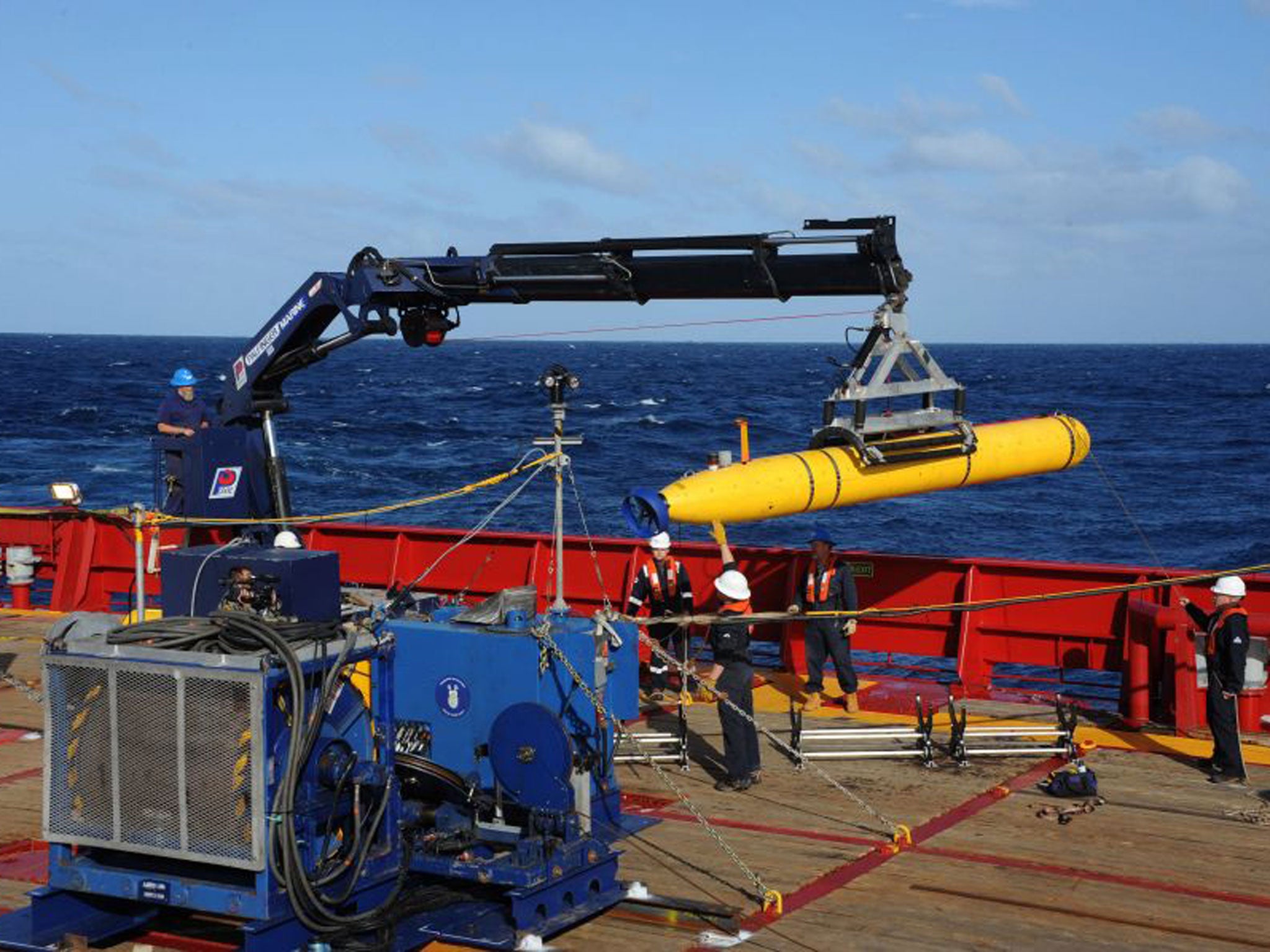Malaysia Airlines flight MH370: Robotic sub deployed as search for missing plane moves under the Indian Ocean
Autonomous sub can create a three-dimensional sonar map of any debris on the ocean floor

Your support helps us to tell the story
From reproductive rights to climate change to Big Tech, The Independent is on the ground when the story is developing. Whether it's investigating the financials of Elon Musk's pro-Trump PAC or producing our latest documentary, 'The A Word', which shines a light on the American women fighting for reproductive rights, we know how important it is to parse out the facts from the messaging.
At such a critical moment in US history, we need reporters on the ground. Your donation allows us to keep sending journalists to speak to both sides of the story.
The Independent is trusted by Americans across the entire political spectrum. And unlike many other quality news outlets, we choose not to lock Americans out of our reporting and analysis with paywalls. We believe quality journalism should be available to everyone, paid for by those who can afford it.
Your support makes all the difference.Search crews sent a robotic submarine deep into the Indian Ocean to begin scouring the seabed for the missing Malaysian airliner after failing for six days to detect any signals believed to be from its black boxes.
Meanwhile, officials were investigating an oil slick about 3.5 miles from where the last underwater sounds were detected, said Angus Houston, the head of an agency coordinating the search off Australia's west coast.
Crews have collected an oil sample and are sending it back to Australia for analysis, a process that will take several days. Mr Houston said it does not appear to be from any of the ships in the area, but cautioned against jumping to conclusions about its source.
The unmanned underwater vehicle, the Bluefin 21, was launched from the Australian navy ship Ocean Shield, the US Navy said. The autonomous sub can create a three-dimensional sonar map of any debris on the ocean floor.
The move comes after crews picked up a series of underwater sounds over the past two weeks that were consistent with signals from an aircraft's black boxes, which record flight data and cockpit conversations. The devices emit "pings", but their batteries only last about a month and are now believed dead.
"Today is day 38 of the search," Mr Houston said. "We haven't had a single detection in six days, so I guess it's time to go under water."
Read more: Plane 'thrown around like fighter jet to dodge radar'
Did jet's co-pilot make last-gasp phone call before it disappeared?
Australian Prime Minister Tony Abbott raised hopes last week when he said authorities were "very confident" the four strong underwater signals that were detected were from the black boxes on Flight 370, which disappeared 8 March during a flight from Kuala Lumpur, Malaysia, to Beijing with 239 people on board.
But Mr Houston warned that while the signals are a promising lead, the public needs to be realistic about the challenges facing search crews in the extremely remote, deep patch of ocean - an area he called "new to man".
"I would caution you against raising hopes that the deployment of the autonomous underwater vehicle will result in the detection of the aircraft wreckage. It may not," he said. "However, this is the best lead we have, and it must be pursued vigorously."
Mr Houston, a retired Australian chief air marshal, called the search "one of the largest search and rescue, search and recovery operations that I've seen in my lifetime".
AP
Join our commenting forum
Join thought-provoking conversations, follow other Independent readers and see their replies
Comments